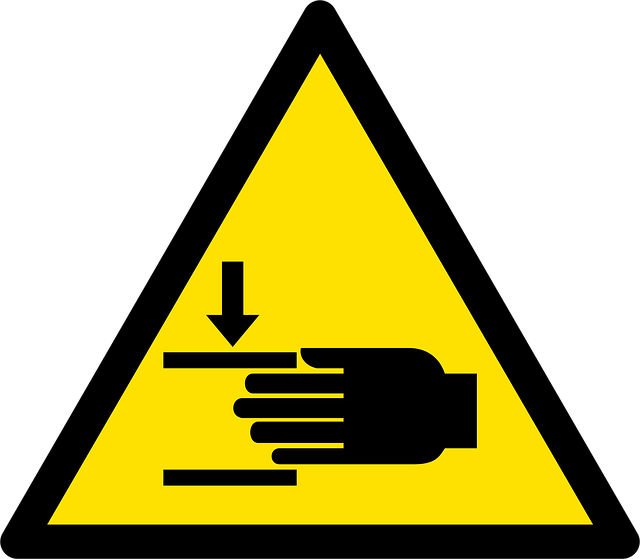Uncovering Essential Evidence for Product Defect Injury Claims

Product defect injury cases are legal battles aimed at holding manufacturers, distributors, and sell…….
Product defect injury, a critical aspect of consumer safety, refers to harm suffered by individuals as a result of defective products. This phenomenon has far-reaching implications, from impacting individual lives to shaping industry standards and regulatory frameworks worldwide. In an era where product innovation is rapid and global markets are interconnected, understanding the intricacies of product defect injury is more crucial than ever. This article aims to provide a comprehensive overview, delving into various facets of this complex issue. By exploring its definition, global impact, economic considerations, technological advancements, policy frameworks, challenges, case studies, and future prospects, readers will gain valuable insights into the world of product defect injury.
At its core, a product defect is a failure or shortcoming in a product that deviates from its intended design, manufacturing standards, or safety requirements. These defects can manifest in various forms, such as mechanical failures, chemical exposure, electrical hazards, or inadequate labeling. When such defects cause harm to the user, it constitutes a product defect injury. This injury can range from minor injuries like cuts and bruises to severe consequences including permanent disabilities or even fatalities.
Historically, product liability laws have evolved to address these concerns, holding manufacturers, distributors, and retailers accountable for any injuries caused by their products. The concept of strict liability ensures that consumers are protected regardless of fault, fostering a culture of safety and quality control. This evolution has been driven by numerous high-profile incidents, such as the Toyota accelerator pedal recall in 2009-2010, which affected millions of vehicles globally.
Product defect injury is not confined to a single region or industry; it is a global issue with significant implications. The International Organization for Standardization (ISO) estimates that product recalls worldwide cost manufacturers and retailers approximately $120 billion annually, primarily due to safety concerns related to defects. This substantial financial impact underscores the magnitude of the problem.
Regional Differences: Different regions have varying approaches to product defect management, influenced by cultural, legal, and economic factors. For instance:
Emerging Trends: The digital age has introduced new dimensions to product defect injury. Online marketplaces connect consumers directly with manufacturers worldwide, increasing the complexity of tracking and managing defects. Additionally, the rise of smart products raises concerns about data privacy and security, as well as potential technical failures with unforeseen consequences.
The economic implications of product defect injury are multifaceted and significant.
Market Disruption: Product recalls can lead to significant financial losses for manufacturers, including the cost of fixing or replacing defective products, legal fees, and damage to reputation. For instance, the 2016 Takata airbag recall, one of the largest in history, resulted in a $100 billion settlement, impacting numerous automotive companies.
Investment Patterns: Investors closely monitor product safety records when making decisions. Companies with a history of product defects may face higher borrowing costs and reduced investor confidence. Conversely, those prioritizing safety can gain competitive advantages and attract responsible investors.
Consumer Behavior: Product defect incidents can influence consumer trust and purchasing patterns. Negative experiences may drive consumers to seek safer alternatives, impacting market share for affected brands. On the other hand, proactive companies addressing defects can enhance brand loyalty and reputation.
Technology plays a pivotal role in managing product defect injury by improving detection, monitoring, and prevention mechanisms. Here are some significant advancements:
Governing product defect injury is a complex task involving various policies, regulations, and legislative frameworks worldwide. These measures ensure accountability, promote safety, and protect consumer rights.
International Agreements: Organizations like the World Trade Organization (WTO) provide a framework for product safety standards, ensuring that trade-related regulations do not create unnecessary barriers. The Harmonized System (HS) classification system aids in standardizing product coding globally, simplifying customs procedures while facilitating defect tracking.
Regional Regulations: As mentioned earlier, regions have their own comprehensive sets of rules. For instance:
Product Liability Laws: These laws establish legal frameworks for holding manufacturers, distributors, and retailers accountable for defective products. Strict liability, as mentioned earlier, is a common feature, ensuring consumer protection regardless of negligence.
Despite the progress made in managing product defect injury, several challenges and criticisms persist, demanding attention and innovative solutions.
Proposed Solutions:
Case Study 1: Toyota Recall (2009-2010): This well-documented incident involved an accelerated wear of the accelerator pedal in certain Toyota vehicles, leading to unintended acceleration. The company’s proactive response, including a global recall, demonstrated the importance of swift action and transparency. Toyota’s experience highlighted the impact of effective communication with regulators and consumers, ensuring minimal harm to its reputation despite significant financial costs.
Case Study 2: Apple Airpods (2017): Reports of the wireless earbuds’ tendency to fall out of users’ ears led to a product safety recall. Apple’s handling of this issue showcased its commitment to consumer well-being. The company offered free replacement cases and encouraged customers to return defective products, ensuring customer satisfaction while also learning from the defect.
Lessons Learned:
As we peer into the future of product defect injury management, several growth areas and emerging trends emerge:
Strategic Considerations for Manufacturers:
Product defect injury is a complex yet critical aspect of modern consumer life, shaped by global markets, technological advancements, and evolving regulations. Understanding its dynamics is essential for manufacturers, policymakers, and consumers alike. By navigating the challenges and embracing emerging trends, it is possible to create a safer product landscape. The examples and insights provided in this article highlight the importance of continuous improvement, proactive measures, and collaborative efforts to mitigate risks associated with product defects.
Q: How do consumers know if a product they purchased is unsafe?
A: Consumers can stay informed through product safety recalls published by regulatory bodies and reputable media sources. Companies are legally obligated to notify customers about affected products, providing instructions for safety measures or replacements.
Q: What should manufacturers do to ensure product safety?
A: Manufacturers should implement robust quality control measures, conduct thorough testing, and remain updated on relevant regulations. Regular audits, employee training, and a culture of continuous improvement are vital to identifying and addressing potential defects.
Q: How can I report a defective product?
A: Reporting procedures vary by region but typically involve contacting the manufacturer directly or reaching out to local consumer protection agencies/regulatory bodies. Providing detailed information about the product and its defect is essential for effective action.
Q: Are there legal rights for consumers affected by product defects?
A: Absolutely. Most countries have consumer protection laws that grant individuals rights in such cases. These may include the right to a refund, replacement, or repair, as well as compensation for any losses incurred due to defective products.

Product defect injury cases are legal battles aimed at holding manufacturers, distributors, and sell…….

Product defect injuries pose significant risks, leading to accidents causing burns, fractures, toxic…….

Product defects can cause significant psychological harm, including anxiety, depression, and PTSD, a…….

Product defect injuries are a significant consumer concern arising from manufacturing flaws, design…….

Product defect injuries, ranging from minor to severe disabilities or fatalities, result from produc…….

Understanding and adhering to reporting deadlines for product defect injuries is crucial to protecti…….

After experiencing a product defect injury, follow these steps:1. Assess Safety: Calmly evaluate imm…….

Product defect injuries, ranging from broken bones to traumatic brain injuries (TBI), can cause long…….

In today’s consumer-driven world, product defects can lead to unexpected injuries during everyday us…….